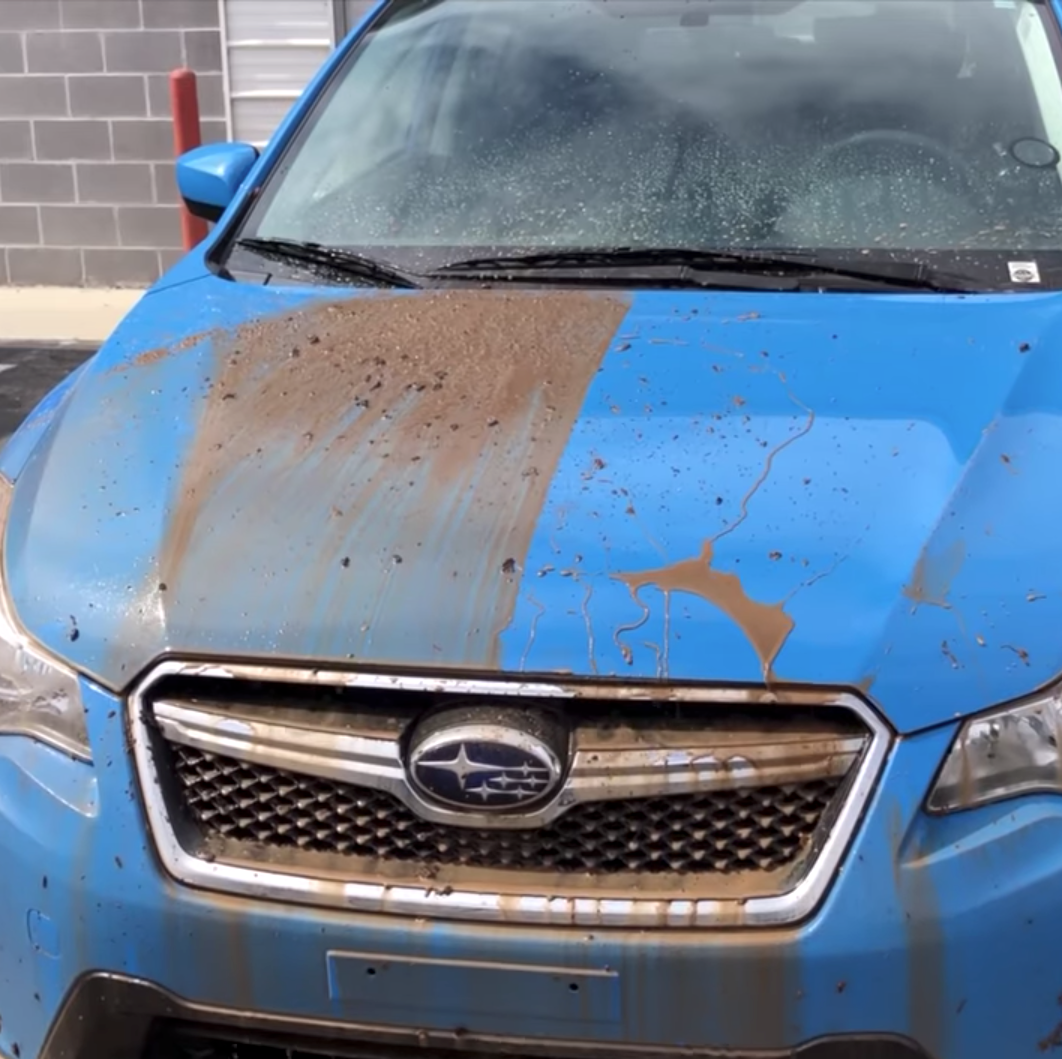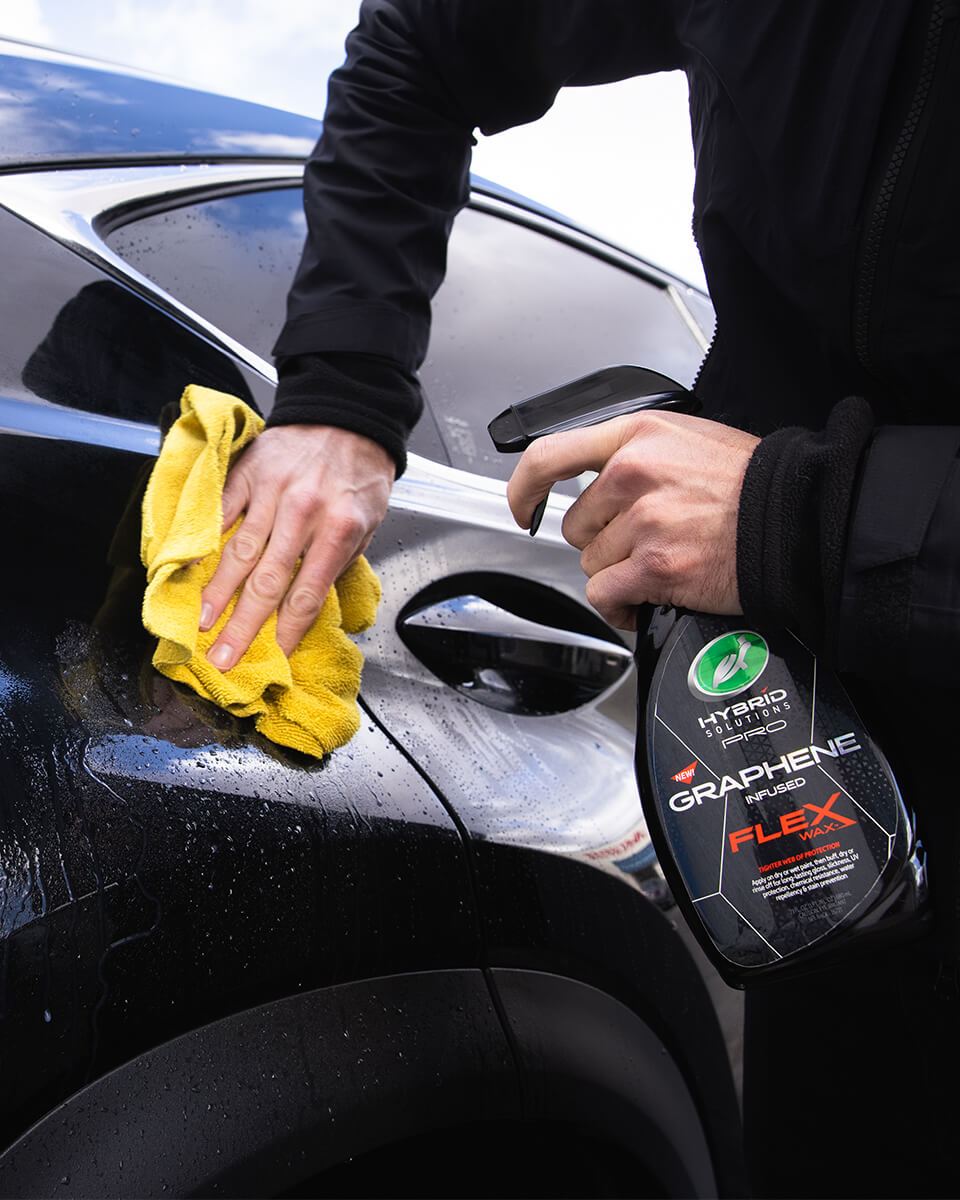Exploring the Science Behind Car Ceramic Coating and Its Safety Properties
The scientific research of car ceramic coating provides an interesting study in sophisticated vehicle security. Made up largely of silicon dioxide and polymers, these coatings form a robust bond with vehicle paint. This communication enhances sturdiness against ecological dangers while supplying hydrophobic advantages. The details of just how these coatings work and their long-term advantages stay less understood. Ceramic Coating Newark. Unloading these details reveals why ceramic finishes are becoming a recommended choice for lorry treatment
What Is Ceramic Coating?
Ceramic coating is a liquid polymer that chemically bonds to the surface of a car's paint. This innovative safety layer boosts resilience and uses superior resistance to ecological variables. Unlike traditional wax or sealers, which supply temporary defense, ceramic coverings create a durable shield that can hold up against harsh conditions such as UV rays, acidic contaminants, and extreme weather condition. When used properly, the coating creates a hydrophobic surface, creating water to bead and slide off, which aids in preserving the vehicle's sanitation. Furthermore, it offers improved gloss and depth to the paint, making the automobile show up more sleek and vibrant. The application process usually entails thorough surface preparation, consisting of cleaning and sprucing up, to ensure peak bonding. Because of this, ceramic coatings are ending up being increasingly prominent amongst car enthusiasts and those seeking to protect their investments, assuring to maintain the car's visual appeal while minimizing the regularity of maintenance.
The Structure of Ceramic Coatings
The detailed formula of ceramic layers mainly is composed of silicon dioxide (SiO2), which is stemmed from natural sources like quartz and sand. This key part offers the foundation for the coating's resilience and protective high qualities. Along with SiO2, ceramic finishes frequently consist of different polymers and ingredients that improve attachment, versatility, and resistance to environmental factors. These substances work synergistically to develop a robust obstacle against contaminants such as dust, chemicals, and UV rays.Furthermore, some formulas integrate titanium dioxide (TiO2) or other nanomaterials, which can augment the coating's hydrophobic residential or commercial properties, leading to enhanced water repellency. The exact make-up can vary considerably amongst producers, affecting efficiency and long life. Inevitably, the combination of these elements culminates in a safety layer that not just boosts the aesthetic allure of vehicles however likewise serves to prolong their lifespan by protecting the surface from potential damages.
Just How Ceramic Coatings Job
Understanding how ceramic finishings work involves exploring their chemical structure, which adds to their protective high qualities. The application process is vital for accomplishing suitable results, while long life and durability variables establish the coating's efficiency in time. With each other, these components highlight the advantages and efficiency of ceramic finishings for car defense.
Chemical Structure Explained
While numerous car owners look for long-lasting security for their lorries, the chemical make-up of ceramic finishes plays an important duty in their efficiency. These finishes mainly consist of silicon dioxide (SiO2), which is originated from natural minerals. This substance creates a strong bond with the car's paint, creating a sturdy, safety layer. Furthermore, lots of ceramic finishings consist of titanium dioxide (TiO2), boosting their hydrophobic homes and resistance to UV rays. The visibility of polysiloxanes can further enhance adaptability and toughness. Together, these components add to the coating's capacity to repel water, dust, and impurities, while additionally providing a high-gloss surface. Recognizing this chemical foundation assists car proprietors value the durable protection used by ceramic layers.
Application Process Introduction
Using ceramic layers involves a precise procedure that assures optimal bonding and security for the vehicle's surface area. Extensive cleansing and purification of the car's outside are carried out to eliminate dirt, gunk, and previous waxes. This step confirms that the surface area is devoid of pollutants that might impede bond. Following this, the paint is commonly brightened to boost quality and get rid of any kind of blemishes. As soon as prepared, the ceramic coating is applied in little sections using an applicator pad, enabling uniform coverage. The coating is after wikipedia reference that left to heal, forming a solid chemical bond with the surface. Correct curing times and problems are important, as they confirm the coating attains its maximum performance and protective top qualities.
Longevity and Resilience Factors
Ceramic finishes are designed to supply long-lasting security via their innovative chemical structure, which develops a durable barrier against ecological contaminants. The sturdiness of these finishes is affected by aspects such as the thickness of the application, the high quality of the item, and the conditions under which the lorry is exposed. Top notch ceramic coatings can last several years, withstanding scrapes, UV rays, and chemical stains. Appropriate upkeep, consisting of normal cleaning and periodic reapplication, can even more enhance long life. Additionally, ecological elements like environment and direct exposure to contaminants can impact the life-span of the coating. In general, when used and preserved appropriately, ceramic coatings supply exceptional toughness, making them a prominent selection for car enthusiasts seeking to preserve their automobile's look.
Hydrophobic Qualities and Water Repellency
Hydrophobic buildings are a hallmark of high quality car ceramic finishings, considerably improving the lorry's surface performance. These finishes develop a molecular bond with the car's paint, causing a surface area that drives away water properly. When water comes right into contact with a ceramic-coated surface, it grains up and rolls off, reducing the amount of fluid that remains on the paint. This behavior not only adds to a cosmetically pleasing look yet also reduces the build-up of pollutants such as dirt, crud, and road salts.The improved water repellency causes easier cleansing and upkeep, as much less effort is required to get rid of undesirable substances. Additionally, the hydrophobic nature of ceramic finishes assists in avoiding water areas, which can mar the finish of uncoated surface areas. In general, the incorporation of hydrophobic properties in ceramic layers plays a necessary duty in preserving the vehicle's excellent look while streamlining upkeep.
Security Versus Scratches and UV Damages
Car ceramic finishes provide substantial protection versus scratches and UV damage. The scratch resistance system creates a durable layer that soaks up effects, while the UV protecting benefits assist keep the car's paint integrity with time. Together, these features contribute to a longer-lasting and aesthetically attractive finish.
Scrape Resistance Mechanism
Making use of advanced technology, ceramic coverings provide a durable shield versus scratches and UV damage, enhancing the long life and appearance of automobile surfaces. The scrape resistance mechanism of these finishes is associated to their unique molecular framework, which forms a long lasting bond with the vehicle's paint. This bond develops a hard, safety layer that can soak up effects and stand see this site up to abrasions. Additionally, the smooth surface area of the coating decreases rubbing, making it hard for pollutants to stick and trigger scrapes. The chemical structure of ceramic layers typically includes nanoparticles that strengthen the protective layer, additional boosting its durability. Subsequently, automobiles treated with ceramic coverings show substantially boosted scratch resistance contrasted to typical wax or sealers, making certain an immaculate finish gradually.
UV Shielding Conveniences
The protective high qualities of ceramic layers expand beyond scratch resistance to consist of considerable UV securing advantages. These finishings develop a robust barrier that shows damaging ultraviolet rays, safeguarding the lorry's paint and underlying materials. Long term direct exposure to UV radiation can lead to fading, oxidation, and wear and tear of the paint finish. By including ceramic finishes, car owners can successfully alleviate these dangers, preserving the aesthetic allure and stability of their vehicles. Furthermore, the UV blocking residential properties contribute to boosted durability, reducing the regularity of repainting and maintenance. Inevitably, the combination of ceramic coatings supplies a detailed option for shielding cars from the damaging impacts of sun direct exposure, making certain a continual, vivid appearance with time.
The Durability and Upkeep of Ceramic Coatings

Regularly Asked Questions
Can Ceramic Coating Be Applied to Any Kind Of Sort Of Automobile?
Ceramic coating can be related to various kinds of lorries, including vehicles, vehicles, and bikes. Nevertheless, surface prep work and compatibility with certain materials are crucial for excellent attachment and efficiency of the coating.
Exactly How Much Does Ceramic Coating Generally Expense?
Ceramic coating typically costs in between $500 and $2,000, depending on aspects such as automobile size, coating quality, and expert application. The investment can provide resilient security and improve the car's look in time.

Is Specialist Application Required for Best Results?
The requirement of professional application commonly depends upon desired results. Professionals usually ensure proper surface preparation and application strategies, bring about excellent bonding and long life of the coating, which may be challenging for inexperienced individuals to accomplish.
Can Ceramic Coatings Be Eliminated or Fixed?
Ceramic layers can be gotten rid of or fixed, though the process may require details solvents or techniques - Ceramic Coating Newark. Correct removal is necessary to avoid damage to the underlying surface area, stressing the significance of specialist help for suitable results
Exactly How Does Porcelain Coating Compare to Standard Wax?
The contrast between ceramic coating and standard wax exposes that ceramic coverings use superior toughness, boosted protection against ecological contaminants, and longer-lasting sparkle, while wax requires much more regular application and gives much less overall resistance to damage.